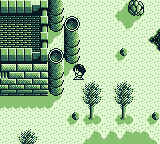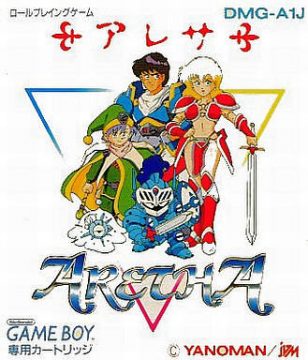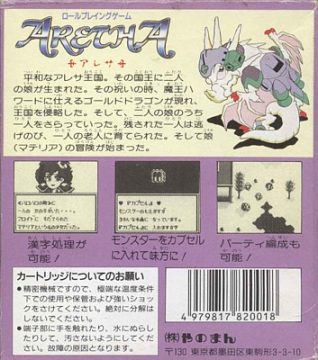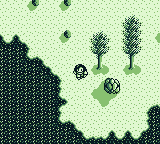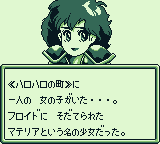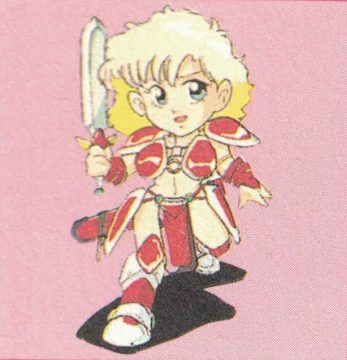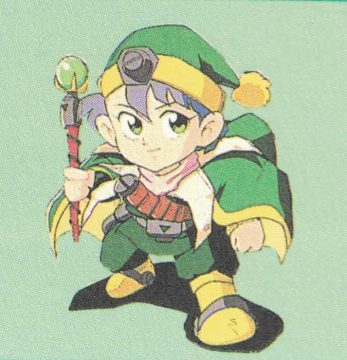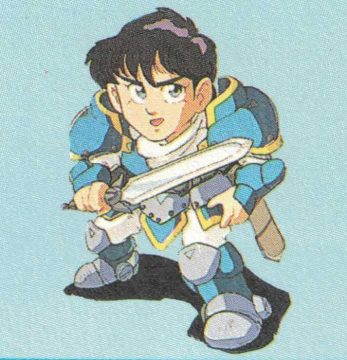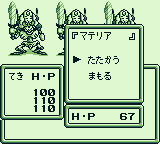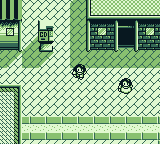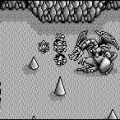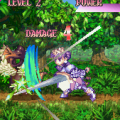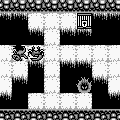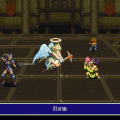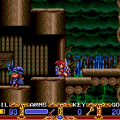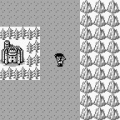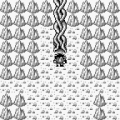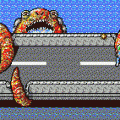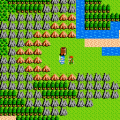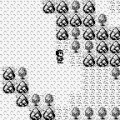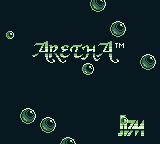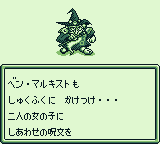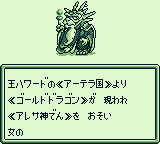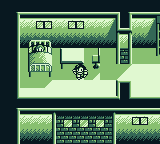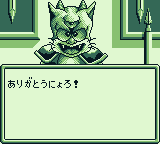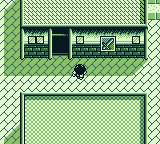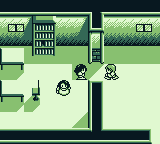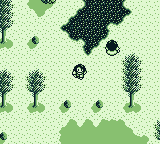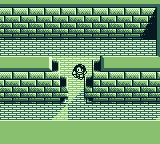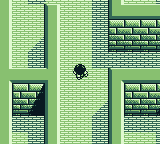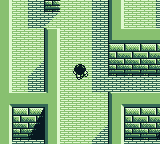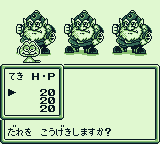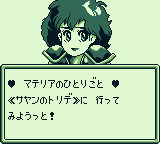During the early to mid 1990s, Squaresoft and Enix primarily dominated the console RPG market in Japan with their Final Fantasy and Dragon Quest series. Even so, these RPGs only found success with a niche audience in the West. As a result, other popular JRPG series in Japan, such as Aretha, would never see an official release abroad, which is a shame considering the Aretha series stood above most of its competition in terms of quality and charm.
Developed by Japan Art Media and published by Yanoman (famous for making jigsaw puzzles), Aretha started its humble beginnings in 1990 on the Game Boy. The series achieved enough sales to produce six games total: three on the Game Boy and three on the Super Famicom. Fueled by the success of Aretha, Yanoman and Japan Art Media branched out and added more RPGs to their catalog, such as Trinea, Song Master, along with several Lunar and Gundam games.
With the exception of the final game of the series, the gameplay in the Aretha series resembles a typical turn-based JRPG. It borrows heavily from Dragon Quest, but unlike many copycats, this one performs quite well. Many Japanese developers, especially those designing RPGs on the Game Boy, had difficulty with the limitations of the handheld system in 1990, yet Aretha proved to be a better quality game than most of its counterparts even on the Famicom.
As a typical game based on anime characters, Aretha offers some degree of fan service. The females are usually scantily-clad in bikini armor. One game in the series even has a few enemies with exposed breasts. Fortunately, fan service does not detract from the gameplay, considering that most of the detailed portraits are on the box art or manual, and the fact that there’s not much fan service a pixelated Game Boy screen can provided.
Aretha on the Game Boy was successful enough to spawn a trilogy on the handheld, followed by three more games on the Super Famicom. Each game in the series brought its own share of improvements. Unfortunately, since these games never had an official release outside of Japan, the Japanese language barrier will prevent many from ever enjoying these treasures.
By 21st century standards, the first Aretha on the Game Boy is a very outdated game. However, when it was released in November of 1990, it was far ahead of its time, sporting several new features were either new or very uncommon.
Aretha takes place on the continent of Artera. King Leparton ruled over the peaceful kingdom of Aretha, which lies within Altera (yes, they both sound very similar, and even look similar in their Katakana spelling). King Leparton had two daughters and bestowed upon them two rings of happiness: a gold cats eye and a silver cats eye ring. To celebrate this occasion, he threw a feast.
As a part of the festivities, the great wizard, Ben Marxist, took the sisters to Aretha Temple to bestow his magical blessings upon them. Though at that very moment, the demon lord, Howard, invaded the Aretha Kindgom with a golden dragon under his command, and he kidnapped one of the princesses. King Leparton and the Arethean army fought fiercely, but were eventually defeated in the end. Summoning the last of his strength, King Leparton sealed the Shrine of Aretha and sent the remaining princess down a river in a basket.
An old man named Floyd took the princess in and raised her, naming her Materia. Ten years later, Materia embarks on a journey to save the world against Howard. She can recruit up to two more party members to aid her on her quest.
The game starts when players take control of Materia in Halo-Halo Town. Similar to Dragon Quest, the player starts alone without equipment or money. Talking to the townspeople will hint where to go next. The old man, Floyd, tells Materia that he deposited 30,000 pera (the currency of Altera) in the cash dispenser, which resembles an A.T.M. Thus, the player can purchase equipment and begin the journey.
The game is quite brutal even at the beginning. Fights take place in first person view similar to Dragon Quest. However, the difficulty is very unbalanced. Your very first enemy encounter can wipe you out with ease. The only way to win is to buy the correct weapon and hope that you only fight one gnome instead of three.
The entire game requires you to grind with each new area you visit. It’s slow paced and requires a lot of downtime. However, once you reach a certain level, the random encounters for that particular area will cease, making for easy navigation and faster pacing. There is one drawback to this—you won’t be able to earn anymore of that much needed PERA for shopping until you progress to the next area. Therefore, there is a finite amount of money you can earn throughout the entire game (many Japanese walkthroughs claims this number is around 6,500,000 PERA). You can actually trap yourself from progressing if you shop poorly and not buy the key items.
The world map is quite huge, and players will invest many hours to explore all of Altera. There are several towns spread out, and you will even meet NPCs while traversing the world map and dungeons… And speaking of dungeons, they are too many of them scattered throughout the realm in the forms of fortresses and caves. These dungeons meander along in overly large mazes that look bland with maybe a chest or two thrown in. If it weren’t for the random enemy encounters ceasing once attaining a certain level, even the most hardcore of old-school players would lose patience at the monotony of these crawls. At least the game makes it easy for the player to flee from battle.
The difficult of Aretha is very challenging, but not in a good way. The finite money system results in limiting the amount of recovery items and times you can stay at the hotel to heal yourself. Materia also begins the game alone with no magic, so until you get the second party member, the journey will be very unforgiving. Expect several game overs. You can at least save anywhere, or visit Floyd’s house for a free heal.
Despite these flaws in the game play, Aretha shines in several other places. The graphics look great for a Game Boy RPG game, especially from 1990 (with the exception of the dungeons, of course). Several NPCs have their own animated character portrait, which pops up when you speak to them. Considering this was Yanoman’s first game, and one of the first RPG games on the Game Boy after Final Fantasy Legend (魔界塔士 Sa・Ga) and Sword of Hope (Selection: 選ばれし者), Aretha was ahead of its time.
While traversing the world map, Materia will engage in a “self-talk” ( 独り言) cutscene, wondering aloud what she should do next. These are almost always blatant hints for players, in case they had forgotten where they had left off from their last play time. This eventually evolved into a “party talk” system in the sequels, which carried on in other RPGs such as Namco’s Tales series.
This game also introduced the use of Kanji characters in the font and a “fuzzy system.” Other Game Boy and Famicom RPGs at the time used primarily hiragana and katakana, so the Kanji text was rather special at the time. The “fuzzy system” allows players to bump into a wall and continue moving in a certain direction instead of coming to a complete stop. The direction is quite random, but it provides for a smooth movement when it works right, or frustration when your characters travels in the opposite direction. This characteristic doesn’t seem spectacular now, and it didn’t add to the gameplay.
Another feature of this game is the capsule monster. When you capture a monster, it joins your party for only one battle. This sounds great and all, but not really. In reality, your monster will be weaker than the current monsters you fight; it will lose rather quickly. Therefore, the capsule monster isn’t very effective, and players will most likely ignore this addition. Nonetheless, this feature appeared in this game years before Pokemon came along.
The game did add one more thing that worked out very well: adjusting the movement speed. Players can go to the options menu and toggle the message speed and movement speed. The three speeds are low, medium, and high. Most players will probably walk around with the high speed setting, but at least the developers provided this option. The world of Altera is rather large, so the high movement speed helps.
The plot is very simple and straightforward. Materia must adventure forth to defeat Howard and rescue her long-lost sister, Emilita. Players will hop from dungeon to dungeon, advancing the bare plot along. The characters are somewhat lively. Materia has quite a bit of dialogue through various self-talk scenes and engagements with other NPCs. Sybal is hot-headed, yet kindhearted. Doll never speaks until the very end.
As for the end, players will be disappointed with the ultimate showdown with Howard. Materia and her friends never get to fight Howard, but fight multiple waves of enemies from previous random encounters.
There are secret hidden items in this game that perform tremendous feats for the players. One of them is an item called the Testament. You can acquire this item very early in the game, and it instantly levels you up to level 99. This makes the game’s boss fights really easy and eliminates all random encounters. However, it can also break the game. No random encounters removes the ability to earn PERA from battle. Without PERA, your party cannot purchase upgrades, or mandatory key items to advance the quest. Most Japanese walkthroughs advice players to refrain from using the Testament early on.
Despite its flaws, Aretha sold well enough to have six-game series. Materia’s adventures continue in the following sequels Aretha II and Aretha III.
